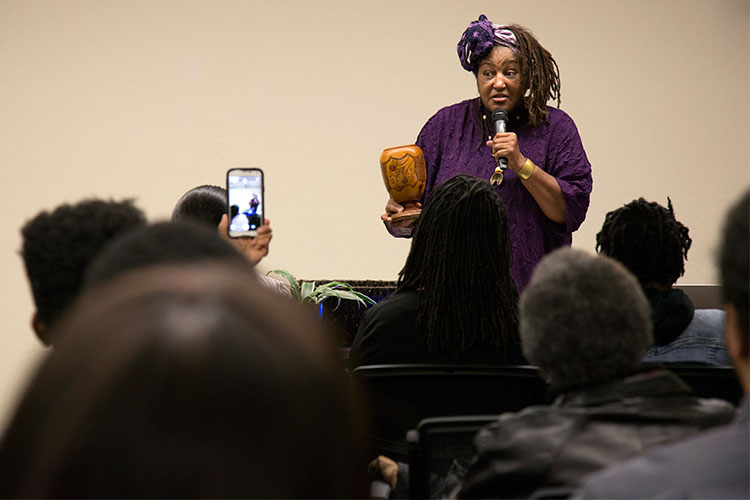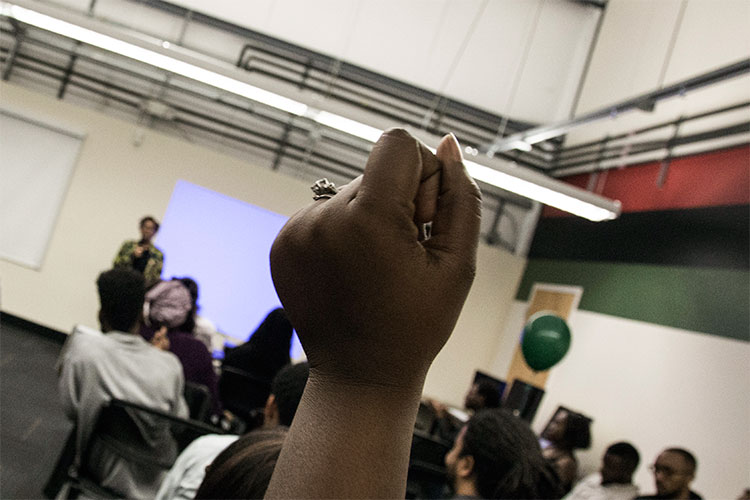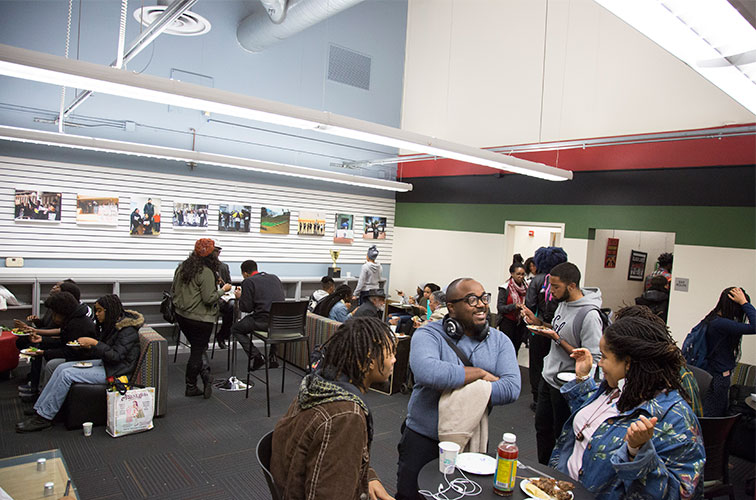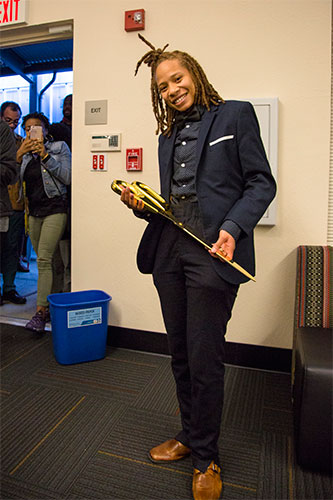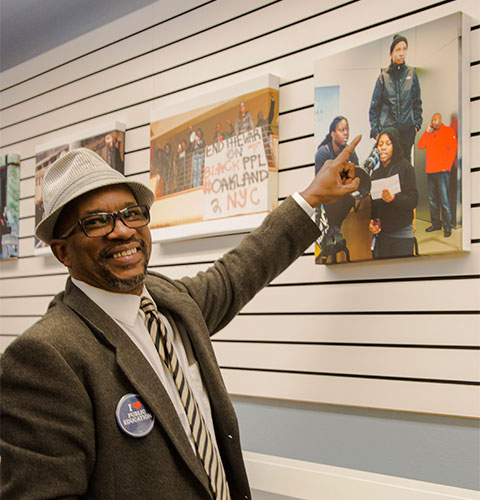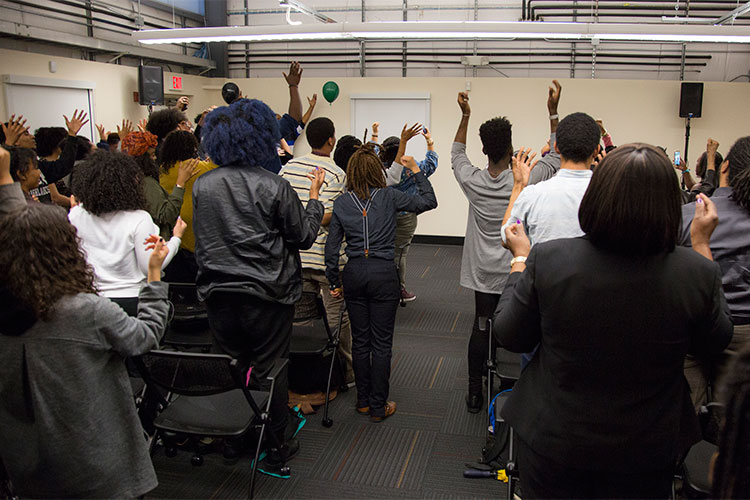‘We have a space!’ — Fannie Lou Hamer Black Resource Center opens
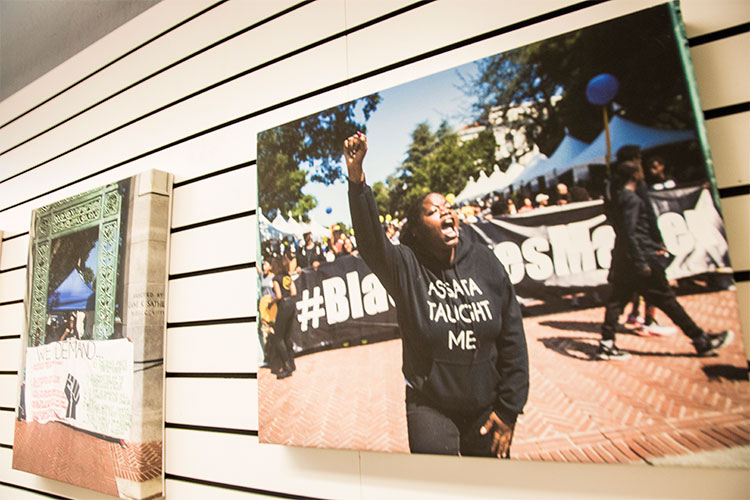
February 23, 2017
“Every one of you is a part of history!” shouted out ab, the program development specialist at the African American Student Development center. “We have a center. We have a space for fellowship, a space to just be us. This is definitely a community win.” And with those words, the ribbon was cut at the grand opening of the Fannie Lou Hamer Black Resource Center at UC Berkeley.
The standing-room-only crowd was blessed by Corrina Gould, a member of the indigenous Chochenyo and Kerkin Ohlone, and Auntie Stella, a long-time teacher and resident of Oakland. They were entertained with music, songs and remembrances. “I was a student here many, many years ago,” said Yvette Gullatt, vice provost and chief outreach officer at the University of California Office of the President’s Office of Diversity and Engagement. Gullat recalled her years as a student at Berkeley: “There was nowhere for me to go, nowhere for me to find community, nowhere to meet people and reach out — part of what college is all about — so I retreated to Moffitt.”
The Fannie Lou Hamer Black Resource Center, located in the Hearst Field Annex, is named after the civil rights activist who was involved with the Student Non-violent Coordinating Committee in the 1960s. Part of the AASD, the center will be a space where Berkeley’s black students can come together, something that is very important to this student population, which makes up just 3 percent of the student body. Out of 29,310 undergraduates, 947 are African Americans; among 10,863 graduate students, 405 are African Americans.
“Having a space where students can come and be a community with each other is really important,” stresses Vice Chancellor of Equity and Inclusion Na’ilah Nasir, who graduated from Berkeley in 1993 when the number of black students was at a high. “Having a critical mass of African American students meant there was a very robust, supportive community on campus intellectually and socially. Students were able to have a complete experience.”
FLHBRC will also provide academic, social and cultural, and professional development services and resources. “I hope the center will help black students not only be retained but also graduate and matriculate through the university as well as help prepare them for the next steps in their lives,” said Blake Simons, the community development specialist at AASD who was project manager for the center’s creation.
“We’re in a moment right now where this administration wants to turn back all the things that we have worked for over the years,” said Leigh Raiford, an associate professor and graduate adviser in the Department of African American Studies. “It’s so important that think about all of the ways that we are empowered in the differences in our blackness, making space for our LGBTQ, non-gender, non-conforming, for our Muslim brothers and sisters, for all of us, for all the different ways that we are black.”
The community that came to celebrate and mark this occasion acknowledged and thanked the students for the hard work they did to make the Fannie Lou Hamer Black Resource Center a reality. “The thing I think that this space represents and reminds us moving forward is that organizing works. Activism works. Advocating together and in concert for what you need and for what you earn and what you deserve, it works and it’s important and we will continue to do that,” said Raiford.
The center is now open to the campus community. “When you come to our events, you’re going to get a cultural experience, an experience of how we operate at Cal, how we celebrate our blackness, how we celebrate our joy,” said Simons.
